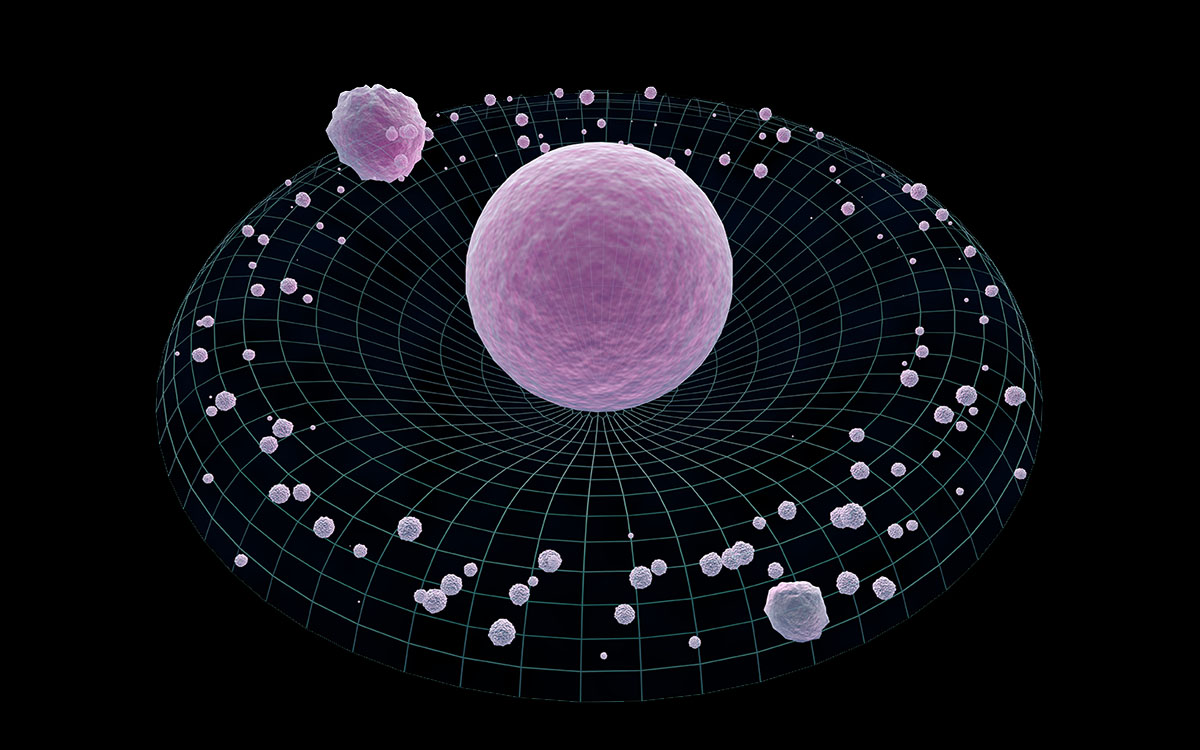why gravity is the force you think you understand, but actually don’t

Physicists all over the world have a common frustration. While for the rest of us, gravity keeps our feet firmly on the ground, the Earth orbiting its parent star, and shaped the warped disk of our home galaxy, to them it’s an incredibly annoying force that seems to defy explanation. Yes, it certainly seems intuitively easy to understand thanks to extensive works by Newton, Poincare, and Einstein. The more mass an object has, the more it warps the fabric of space and time, and the more it attracts objects close enough to feel the effects. Unfortunately that explains what gravity does, but not how, and it’s that how which is sending scientists up a wall.
Here’s how weird gravity is. When compared to the other three fundamental forces governing the universe, it’s appallingly weak and has no carrier particles, or particles whose interaction manifests the fundamental force. Electromagnetism is carried by photons. Photon-like particles called gluons and bosons carry the strong and weak nuclear forces respectively. And while we know that the long sought-after Higgs boson is a manifestation of the Higgs field, interactions with which are what creates mass, we’re missing the piece of how mass warps space and time around itself on scales ranging from quantum to cosmological, possibly even explaining dark matter as nothing more than an artifact of gravity’s quirks.
One possible explanation considered a hypothetical massless particle called a graviton which would propagate the force at the speed of light throughout the universe and attempt to explain what we’re calling haloes of dark matter around galaxies. But that too ran into a problem since gravitons a) couldn’t be detected by our instruments, and b) didn’t fit into the Standard Model, which is pretty much one of the best tested theories in science. On a quantum level, they were essentially too unstable to exist, meaning that unless we find a loophole in particle physics and a means to summon them in colliders while solving the secrets of the universe, gravitons don’t exist and we’re back to square one. Gravity, it seems, emerges from the fabric of the cosmos and doesn’t play by the same rules as other forces.
So, if that’s the case, what rules does it follow? Some physicists are resurrecting a theory first proposed in 1978 to justify how gravity could fit into quantum scales, and while it may sound promising in ruling out exotic attempts at a grand theory of everything, it seems to provide us with possible answers by sweeping the ugly issues that came up when trying to quantize the miscreant force under the rug. It may well be that gravity simply doesn’t manifest itself until we reach a certain scale or particles with mass and charge are aligned in large enough systems where the interactions between them summon it, but right now, we just don’t know enough to say anything for sure. And while it seems bizarre that after nearly three centuries of study we still have so many questions about a fundamental force, that’s just how nature works.





